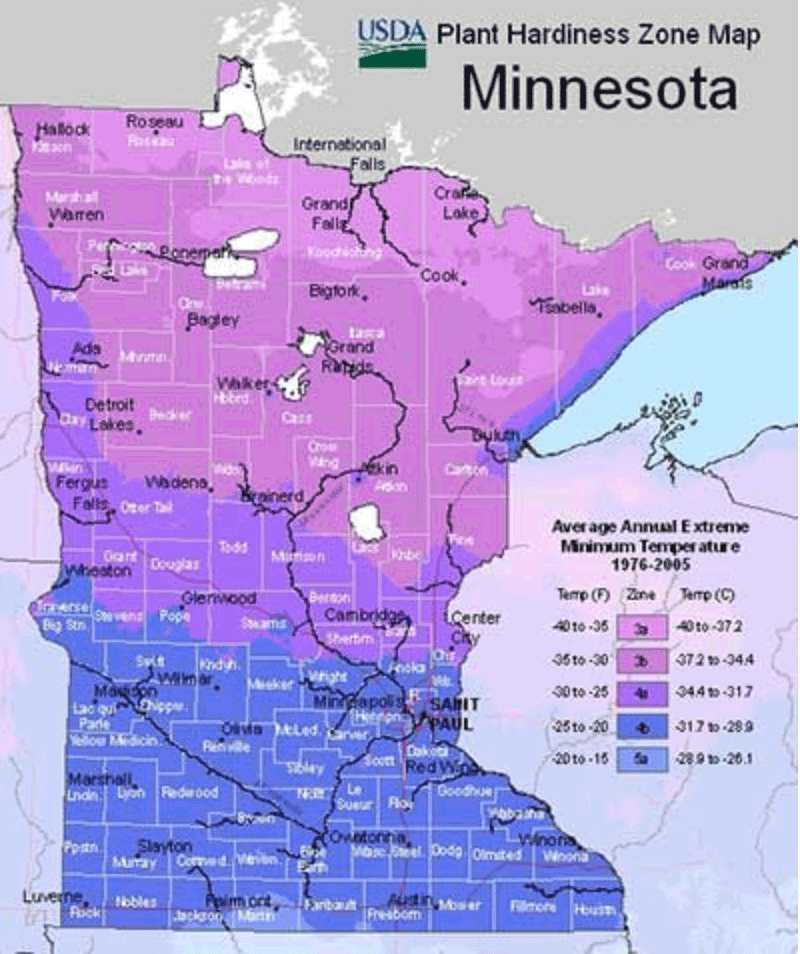Originally from our 2011 catalog, republished in 2019.
 Those colorful bands across the map called USDA hardiness zones are based exclusively on minimum temperatures. The maps put us in USDA hardiness Zone 4, with minimum temperatures in the –20°F to –30°F range. And it does, indeed, get that cold here.
Those colorful bands across the map called USDA hardiness zones are based exclusively on minimum temperatures. The maps put us in USDA hardiness Zone 4, with minimum temperatures in the –20°F to –30°F range. And it does, indeed, get that cold here.
A plant’s survival, however, is dependent on many factors, including soil, sunlight, watering, drainage, exposure to wind, mulch, snow cover, and of course the winters’ minimum temperatures. Note that minimum temperature is just one of many factors. Those zone numbers oversimplify the game.
Within our “Zone 4” gardens, there are many microclimates that allow plants to survive. The “heat zone” around the foundation of a heated home is just one example. The wind shelter from buildings and fences can make a huge difference in a plant’s ability to survive our long dry winters. For other plants, shelter from late winter sun will keep the buds alive through the brutal freeze-thaw cycles of our often tentative springs.
When long-time gardeners compare notes on perennials, it usually turns out that one has never been able to get a certain plant to survive the winter, while for another the same plant grows like a weed.
The zone numbers listed for plants in books and online are good guidelines, but they can be confusing and often too conservative. The experience of other gardeners in your area is a much better guideline. So:
- Talk to your neighbors. Join a garden club. Ask questions and share your own experience.
- Ask at the Master Gardener booth if you have questions about the proper soil, light and watering for the plants you have chosen. They can also tell you if your perennials need special winter protection.
- Give us feedback. We want to hear how the plants do in your garden. That's how we will all find out what plants are successful here.